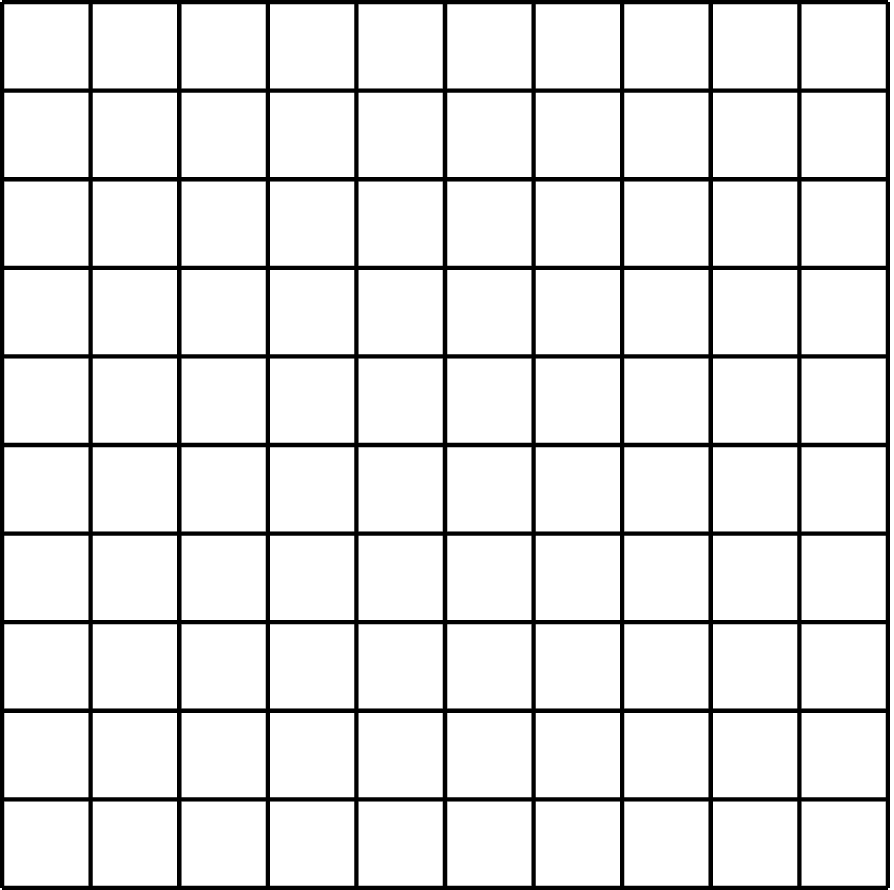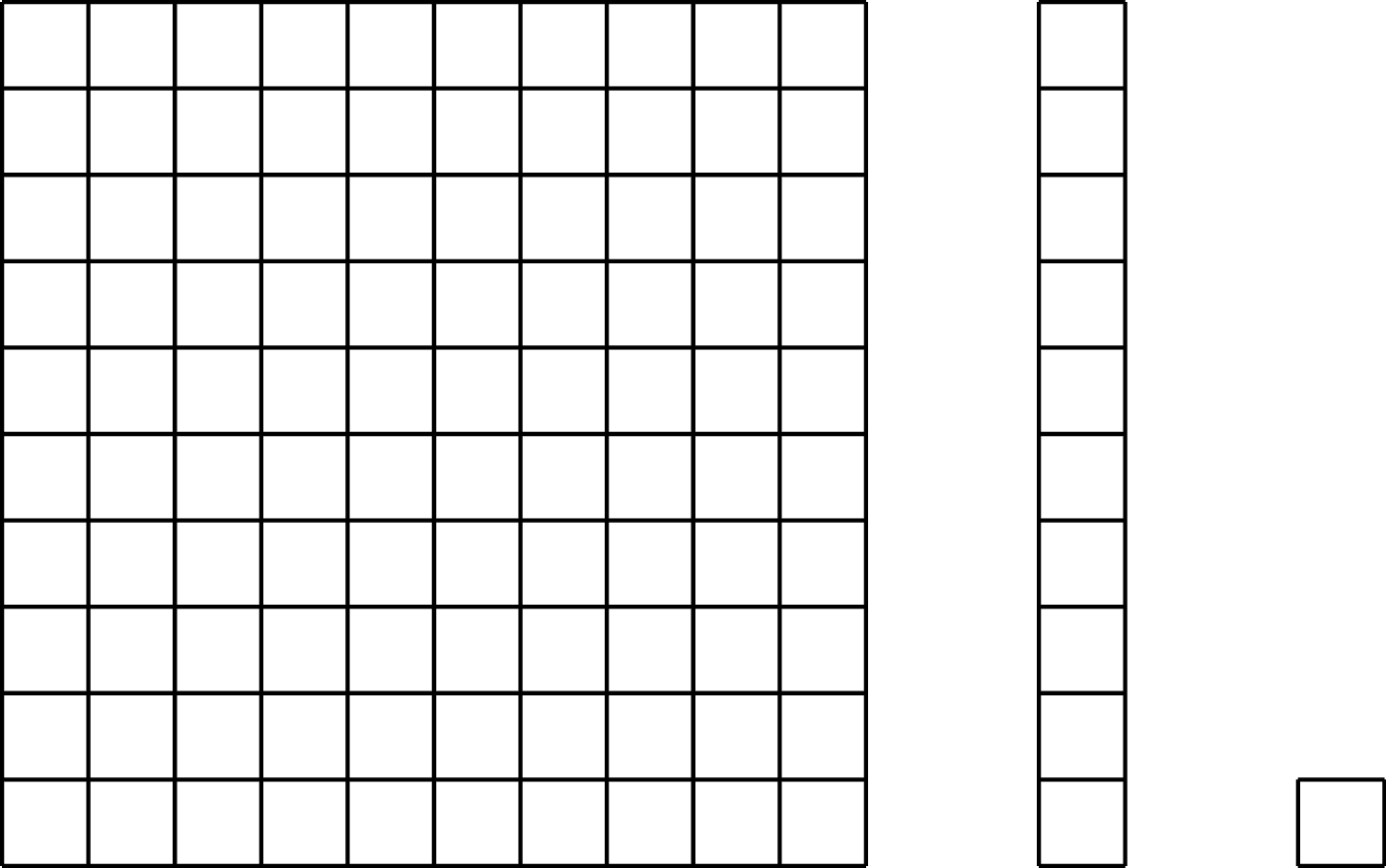2.1: 100, 1, or $\frac{1}{100}$?

Clare said she sees 100.
Tyler says he sees 1.
Mai says she sees $\frac{1}{100}$.
Let’s explore patterns with exponents when we multiply powers of 10.

Clare said she sees 100.
Tyler says he sees 1.
Mai says she sees $\frac{1}{100}$.
In the diagram, the medium rectangle is made up of 10 small squares. The large square is made up of 10 medium rectangles.

| expression | expanded | single power of 10 | |
|---|---|---|---|
| Row 1 | $10^2 \boldcdot 10^3$ | $(10 \boldcdot 10)(10\boldcdot 10 \boldcdot 10)$ | $10^5$ |
| Row 2 | $10^4 \boldcdot 10^3$ | ||
| Row 3 | $10^4 \boldcdot 10^4$ | ||
| Row 4 | $(10 \boldcdot 10 \boldcdot 10)(10 \boldcdot 10 \boldcdot 10 \boldcdot 10 \boldcdot 10)$ | ||
| Row 5 | $10^{18} \boldcdot 10^{23}$ |
There are four ways to make $10^4$ by multiplying smaller, positive powers of 10.
$$10^1 \boldcdot 10^1 \boldcdot 10^1 \boldcdot 10^1$$
$$10^1 \boldcdot 10^1 \boldcdot 10^2$$
$$10^1 \boldcdot 10^3$$
$$10^2 \boldcdot 10^2$$
(This list is complete if you don't pay attention to the order you write them in. For example, we are only counting $10^1 \boldcdot 10^3$ and $10^3 \boldcdot 10^1$ once.)
In this lesson, we developed a rule for multiplying powers of 10: multiplying powers of 10 corresponds to adding the exponents together. To see this, multiply $10^5$ and $10^2$. We know that $10^5$ has five factors that are 10 and $10^2$ has two factors that are 10. That means that $10^5 \boldcdot 10^2$ has 7 factors that are 10. $$10^5 \boldcdot 10^2 =(10 \boldcdot 10 \boldcdot 10 \boldcdot 10 \boldcdot 10) \boldcdot (10 \boldcdot 10)= 10^7.$$This will work for other powers of 10 too. So $10^{14} \boldcdot 10^{47} = 10^{61}$.
This rule makes it easier to understand and work with expressions that have exponents.